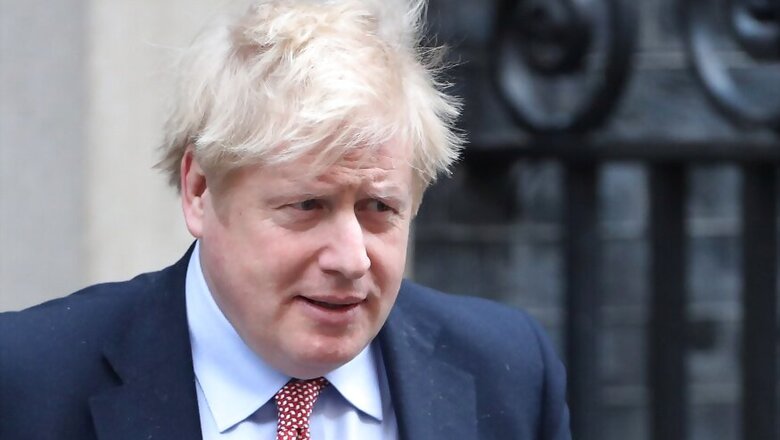
views
British Prime Minister Boris Johnson on Monday was shifted to the intensive care unit at a London hospital after his coronavirus symptoms worsened. Johnson was admitted to St Thomas’ Hospital late on Sunday, 10 days after he was diagnosed with COVID-19. Given how the National Health Service (NHS), UK’s publicly funded healthcare system, is looking to preserve its restricted critical care beds, it is not a decision his medical team would have taken heedlessly, the Financial Times reported.
What treatment is Johnson receiving at the hospital? What symptoms require an ICU admission?
NHS guidelines state that intensive care is required "if someone is seriously ill and requires intensive treatment and close monitoring, or if they're having surgery and intensive care can help them recover."
How many coronavirus patients require ICU admission?
Chris Gough, an intensive care consultant who has treated several COVID-19 patients reportedly said that a person, who required hospital admission, was in the approximately 10 per cent of sufferers with "more severe symptoms."
In a string of tweets, after the news of Johnson’s shift to the ICU broke out, Gough said that such individuals would be treated in an acute ward along with other patients exhibiting similar symptoms.
Such patients, the report added, in most likelihood required "additional oxygen, given either up your nose or through a face mask."
In a scenario where the patient’s requirement for oxygen continued to rise over a 24-hour period, "to the point that he or she was on a flow of 60 per cent oxygen, given through a face mask", the odds are that maybe among the one in four hospital patients needed ICU treatment.
What treatment is given to ICU patients?
The proportion of nurses is much greater in an intensive care unit than in regular wards, often as high as 1:1, the report said.
There were many questions about Johnson’s ICU admission, but the main concern was whether he had been put on a ventilator, which is mostly the reason for a shift to ICU.
A statement issued by Downing Street and St Thomas’ Hospital said that Johnson was receiving "standard oxygen treatment and is breathing without any other assistance."
Mike Grocott, consultant in critical care medicine and vice-president of the Royal College of Anesthetists reportedly said that it was imperative to understand that "being in an intensive care unit isn’t all about being on a ventilator".
Teams of medical professionals would evaluate the situation and see when or if the use of full-ventilation assistance was required by any patients, he added.
But possible procedures included intubating the patient’s windpipe and placing tubes or catheters into veins and arteries.
Is ventilation the most effective treatment for COVID-19 patients?
Among hospitals, St Thomas’ has cared for the largest numbers of COVID-19 patients. A directive sent out by the hospital said early intubation of patients "is resulting in good outcomes" and advised against the prolonged use of non-invasive ventilation called continuous positive airway pressure (CPAP).
But because the novel coronavirus is a new disease, an agreement is in process between medicos. Initially, the report said that doctors in UK were following those in Italy and China, who had placed patients on early ventilation.
"But as the number of patients with COVID-19 increased, experience suggested that many can recover without the need for intubation," said Dr Alison Pittard, dean of the Faculty of Intensive Care Medicine.
Physicians have instead discovered that patients, in an initial stage of the infection, can do reasonably well with CPAP, given via a tight-fitting mask, the report added.




















Comments
0 comment